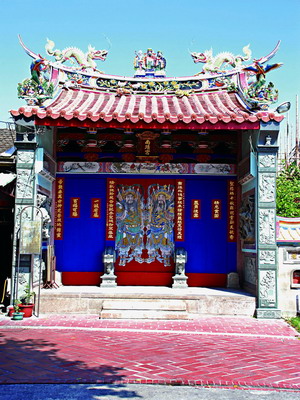Nanjing Temple, Lugang Introduction
Nanjing Temple, according to the "Changhua County Chronicles," was established in the thirty-seventh year of the Qianlong reign (1772) by merchants from Nanjing, Fujian. Located next to the Wangye Temple, it primarily enshrines the deity Guan Sheng Dijun. The Nanjing merchants invited the ancestral deity Guan Sheng Dijun to Taiwan and initially established the temple by the port area of Lukang (the current temple site, which was originally a mooring place for boats). It was initially a center of faith exclusively for immigrants from Zhangzhou to honor. As Zhangzhou individuals developed into the interior, it has now become a Guandi Temple shared by all ethnic groups and the public. Nanjing Temple primarily enshrines Guan Sheng Dijun (reverently titled Fumo Dadi). Accompanying gods include Prince Guan Ping and General Zhou Cheng as the guardian deities. The temple also enshrines Wen Kuai Xing Jun, Marshal Xie Fu, Ma Yegong, the red hare steed that runs a thousand miles a day, and the legendary green dragon crescent blade weighing eighty-one pounds along with various military officials. Guan Sheng Dijun is also known by the name Yu, courtesy name Yun Chang, and his original name Changsheng, hailing from Hedong Jie Liangzhou during the Three Kingdoms period. He is revered for his loyalty, filial piety, integrity, and righteousness, famously known for his brotherhood with Liu and Zhang in the Peach Garden. Guan Sheng Dijun is one of the Five Wenchang and is respected in Confucianism as Wen Heng Sheng Di. Historical records state: "A person from Shandong wrote the Analects (meaning Confucius); a person from Shanxi read the Analects (referring to Guan Di Sheng Jun)." Hence, he is referred to as Confucius of Guan and Confucius of Shanxi. He is venerated as a quasi-saint and a sage, combined with his exceptional martial skills, high moral character, and scholarly accomplishments, making him a deity of education and a protector of scholars.



























